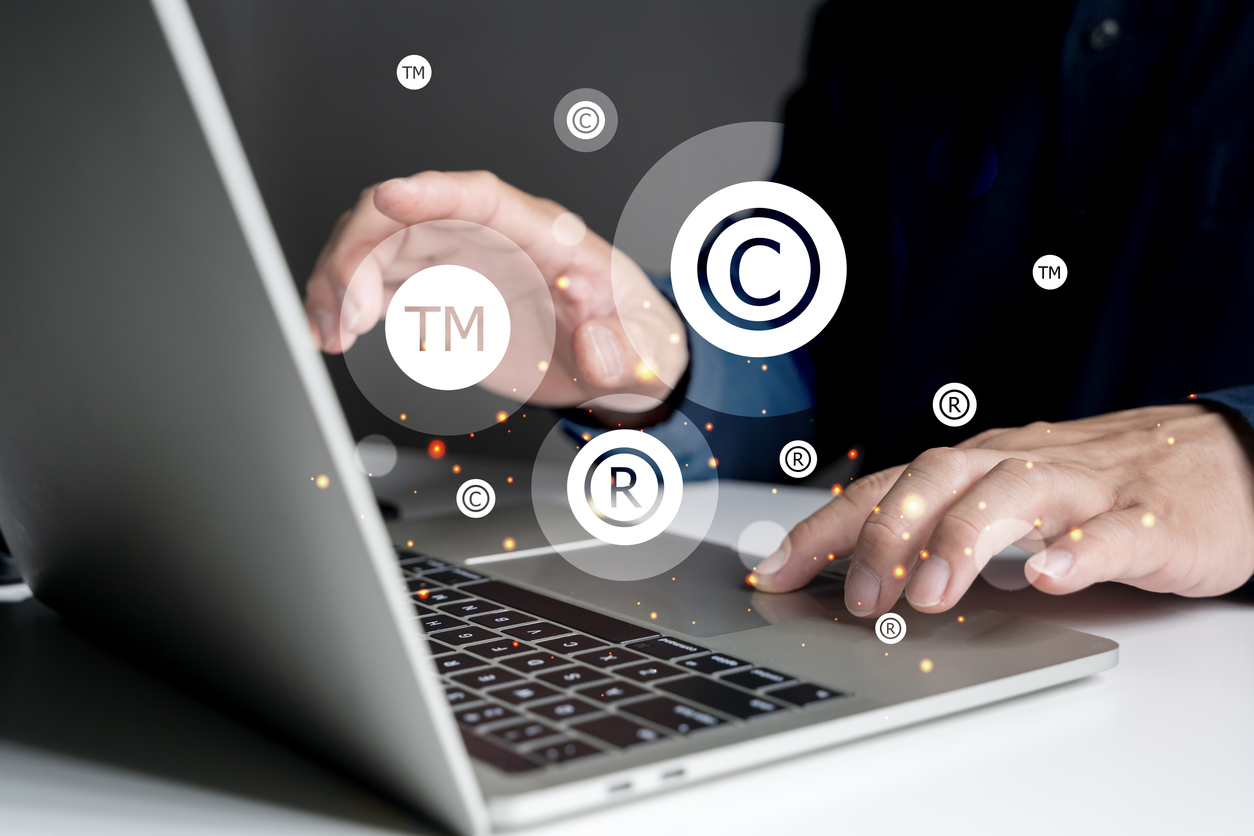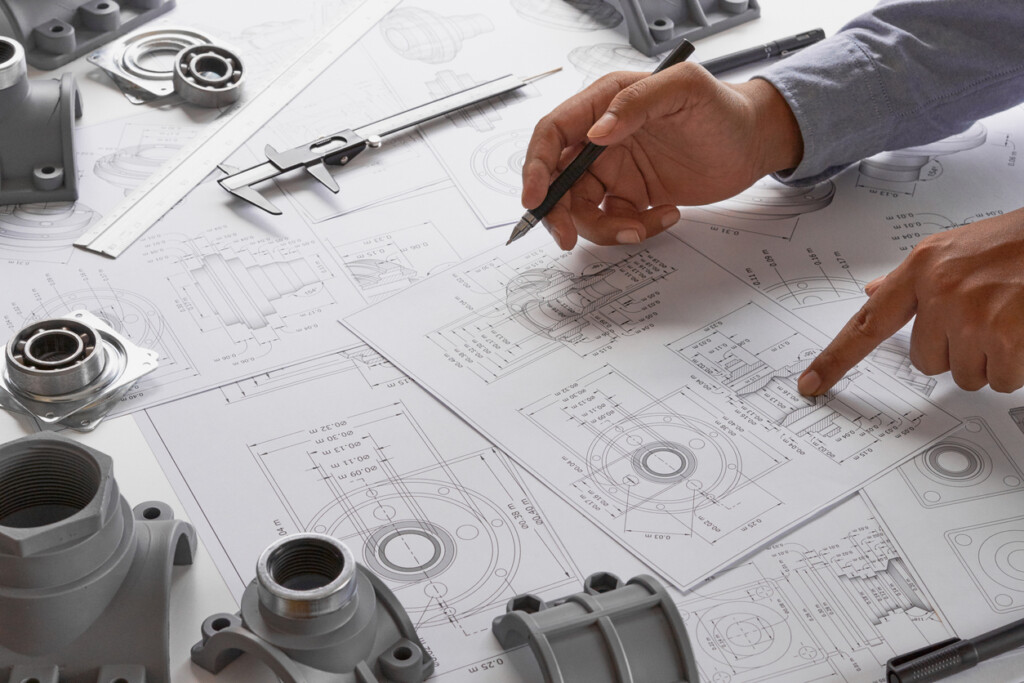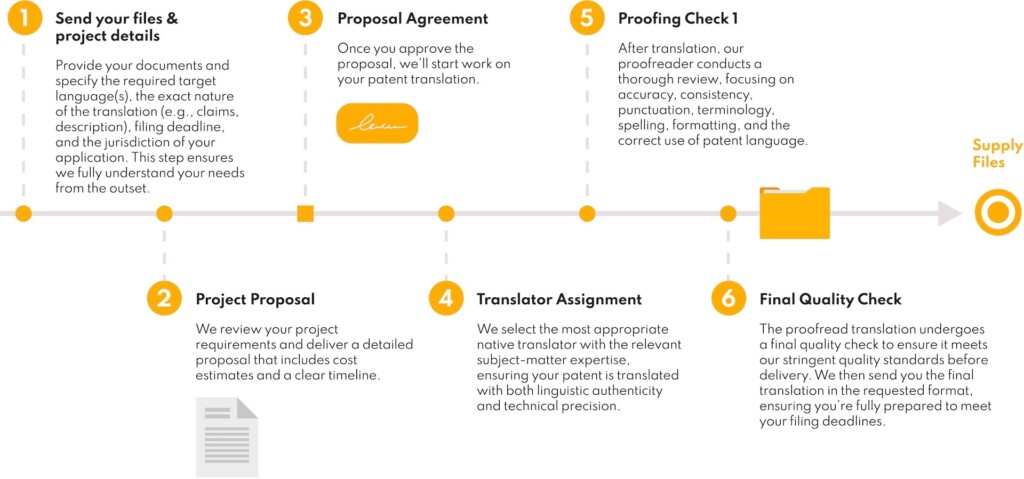Patent Translation: Everything you need to know

1 May 2025
Picture this: you have created a unique product and now you need to protect it from imitation. Patents will safeguard your invention, but their protection may not be global.
To protect your invention internationally, you need a translated patent that complies with the legal and technical standards of each jurisdiction. Since every country has its own patent requirements, accurate translation is essential.
But how can you ensure precision while avoiding costly errors that delay your application? That’s exactly what this guide will cover.
What is patent translation?

Patent translation is a highly specialised field that involves converting patent documents from one language to another while maintaining their legal and technical accuracy.
Given the complexity of patent filings and intellectual property laws, precise translation is essential to ensure compliance, protect inventions, and facilitate international recognition.
Why do we need patent translation?
Patent translations are necessary for several reasons, including international patent filings, legal disputes, and market expansion. Businesses seeking to protect their intellectual property across multiple countries must adhere to different language requirements and legal frameworks.
Without accurate translation, even a well-drafted patent can be misunderstood – leading to delays, rejections, or legal disputes. Precise language ensures your innovation is clearly understood and legally enforceable in each jurisdiction.
International patent frameworks
Securing international patent protection involves several key frameworks and systems, each with its own procedures, filing routes, and translation requirements. Here are some of the most important ones:
- Patent Cooperation Treaty (PCT) The Patent Cooperation Treaty is an international framework that allows applicants to file a single patent application to seek protection in over 150 countries. This simplifies the early stages of filing, but applicants still need to enter the “national phase” in each country later, often requiring translated documents.
- World Intellectual Property Organisation (WIPO) The World Intellectual Property Organisation is the administrator of the PCT system and other international IP treaties. While WIPO facilitates international applications, it does not examine or grant patents itself.
- European Patent Office (EPO) The European Patent Office is a regional authority that grants European patents under the European Patent Convention (EPC). Once granted, patents must either be validated in individual countries (each with their own translation rules) or covered under the Unitary Patent system.
- Unitary Patent A recent option available through the EPO, the Unitary Patent provides uniform protection across participating EU countries. This simplifies post-grant procedures and reduces the need for multiple translations and validations. Understanding these frameworks helps you choose the right patent filing route and ensure compliance with each jurisdiction’s language and technical standards.

Industries that commonly require patent translations
Patent translations are essential across various industries, including:
- Pharmaceuticals & Biotechnology
- Engineering & Manufacturing
- Information Technology
- Automotive & Aerospace
- Medical Devices
- Renewable Energy
Each industry has specialised terminology that requires experienced translators familiar with the field.
At Intonation, we match your patent translation project with an industry expert, ensuring you get the most accurate translations possible.
What happens if the patent translation isn’t quite right?
Errors in patent translations can have serious consequences, including:

Legal disputes: Misinterpretations – whether of technical terms or legal phrasing – can lead to infringement claims, patent rejections, or even loss of enforceability.
Loss of intellectual property rights: Inaccuracies may result in an invalidated patent.
Financial losses: Companies may incur significant costs in legal fees and resubmissions.
Ensuring high-quality translations mitigates these risks and safeguards intellectual property rights. You can find out more about the consequences of low quality translations in our blog.
Types of patent translations
- Patent Application Translations These translations are required when filing a patent in another country, ensuring compliance with local regulations and linguistic accuracy.
- Patent Litigation Translations During legal disputes, patent-related documents, including prior art references and expert reports, need to be accurately translated for use in court proceedings.
- Patent Validation Translations Once a patent is granted, validation translations may be required to maintain protection in different countries, ensuring compliance with national laws.
The process of patent translation
Intonation follows a rigorous, bespoke workflow to guarantee precise patent translations:

Common patent translation mistakes and how to prevent them
Patent documents combine complex technical details with strict legal terminology, requiring translators to be proficient in the technical subject matter while accurately reflecting the legal style required in patent writing to maintain the integrity of the original document.
Some common errors include:
- Mistranslation of key terms: Working with specialised translators prevents incorrect interpretations
- Failure to follow legal formatting: Adhering to jurisdiction-specific patent structures is essential
- Inconsistent terminology: Using industry-specific glossaries ensures uniformity
Why do I need patent translation services?

Professional patent translation services ensure compliance with international regulations, prevent costly legal disputes, and protect intellectual property rights across global markets.
They also ensure that your invention is understood and enforceable wherever you seek protection.
How much does it cost to translate a patent?
The cost of patent translations varies based on language pairs and document length. Common influencing factors include:
- Volume: The length of the patent affects pricing. To give you an idea, our standard translation service level includes an output of 2,000 words per day by the translator.
- Language Pair: Less common languages may have higher rates due to limited expertise.
- Regulatory Requirements: Some jurisdictions have strict certification needs. Extra charges will apply for translations that require notarisation, sworn certification, or validation by patent offices.
For a quick quote based on language and word count, use our cost calculator. Please note that it provides translation rates only. Proofreading, if required, would incur an additional cost. However, it’s a great way to get an initial ballpark estimate.
How to choose the right patent translation service
When selecting a patent translation provider, consider:
- Expertise in both technical and legal aspects
- Membership in recognised translation associations (e.g., ITI, ATC)
- Quality assurance processes to maintain accuracy
- Confidentiality protocols to protect sensitive data
Best practices for ensuring high-quality patent translations
- Work with experienced, mother-tongue translators specialising in patents
- Allow sufficient time for thorough quality checks
- Use a translation agency with robust quality assurance workflows
Why choose Intonation for patent translations?
Intonation is a globally recognised translation agency specialising in patent translations.
Here’s why clients trust us:

Expert Translators: Our professionals have deep technical and legal expertise.
Confidentiality: We prioritise data security and client confidentiality.
Accreditation: We are members of the Association of Translation Companies and the Institute of Translation and Interpreting.
Bespoke Workflow: Our customised approach ensures accuracy, efficiency, and compliance with international patent regulations.
This is how we can boast a 100% customer satisfaction rate based on client feedback! For precise, reliable, and industry-specific patent translations, trust Intonation to handle your intellectual property with the utmost professionalism.
Get in touch with the team today for unparalleled expertise in patent translation.